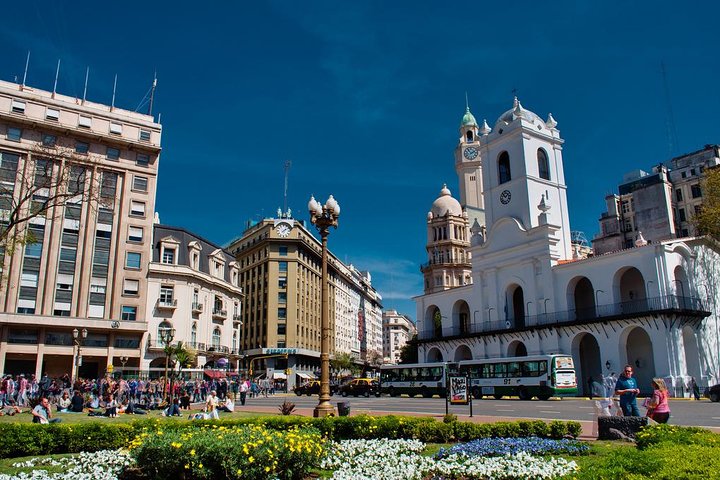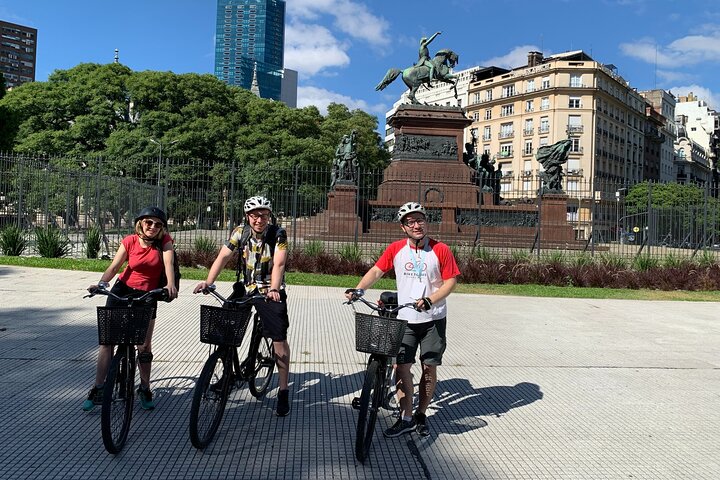Exploring Buenos Aires: A Tapestry of History and Architecture
Embark on a journey through Buenos Aires’ architectural wonders, where history and culture intertwine. Discover the stories behind the city’s iconic landmarks and vibrant neighborhoods, offering a unique perspective on its rich heritage.
A Journey Through Time: Buenos Aires’ Architectural Tapestry
As a biologist and environmental activist, my travels often take me deep into the heart of nature, exploring the lush jungles and diverse ecosystems of Latin America. However, my recent journey to Buenos Aires offered a different kind of exploration—one that delved into the rich tapestry of history and architecture that defines this vibrant city. The Buenos Aires Architecture Tour was an experience that opened my eyes to the stories etched into the very fabric of the city’s buildings.
The Heartbeat of History: Plaza de Mayo
Our tour began at the iconic Plaza de Mayo, a place that pulses with the heartbeat of Argentina’s history. As we stood in the shadow of the Casa Rosada, our guide—a passionate historian—brought to life the tales of political upheaval and social change that have unfolded here. The square is surrounded by architectural marvels, each with its own story to tell. The Cabildo, with its colonial charm, and the Metropolitan Cathedral, with its neoclassical façade, stood as silent witnesses to the city’s evolution.
Walking through the plaza, I couldn’t help but draw parallels between the resilience of these structures and the enduring ecosystems I study in the Amazon. Just as the rainforest adapts and thrives amidst challenges, so too has Buenos Aires, evolving through time while preserving its cultural heritage. The stories of love, power, and revolution that our guide shared were as intricate and captivating as the patterns of a butterfly’s wings.
A Tapestry of Cultures: San Telmo and La Boca
Our journey continued to the neighborhoods of San Telmo and La Boca, each offering a unique glimpse into the cultural mosaic of Buenos Aires. In San Telmo, the cobblestone streets and colonial buildings whispered tales of the city’s past. The transformation of grand mansions into conventillos, or tenement houses, spoke of the social shifts that have shaped the community.
La Boca, with its vibrant colors and artistic flair, was a feast for the senses. The neighborhood’s iconic Caminito street, lined with brightly painted houses, felt like stepping into a living canvas. Here, the spirit of tango and the legacy of Italian immigrants come alive, creating a dynamic blend of old and new. As I wandered through these streets, I was reminded of the interconnectedness of culture and nature—how both are shaped by the people and stories that inhabit them.
The Dance of Old and New: Recoleta and Palermo
Our final stops were the neighborhoods of Recoleta and Palermo, where the dance of old and new architecture is most evident. In Recoleta, the grandeur of the cemetery, with its ornate mausoleums and statues, offered a serene reflection on the passage of time. It was a reminder of the cycles of life and death that I often witness in the natural world.
Palermo, on the other hand, buzzed with modern energy. Here, sleek skyscrapers stand alongside historic buildings, creating a skyline that mirrors the city’s dynamic spirit. The juxtaposition of architectural styles was a testament to Buenos Aires’ ability to embrace change while honoring its past.
As I concluded my architectural journey through Buenos Aires, I was left with a profound appreciation for the city’s ability to weave together its diverse influences into a cohesive whole. Much like the ecosystems I strive to protect, Buenos Aires is a living, breathing entity—one that thrives on the harmony between its history and its future. This tour was not just a walk through the city; it was a journey through time, a celebration of the stories that make Buenos Aires a truly remarkable place.











































